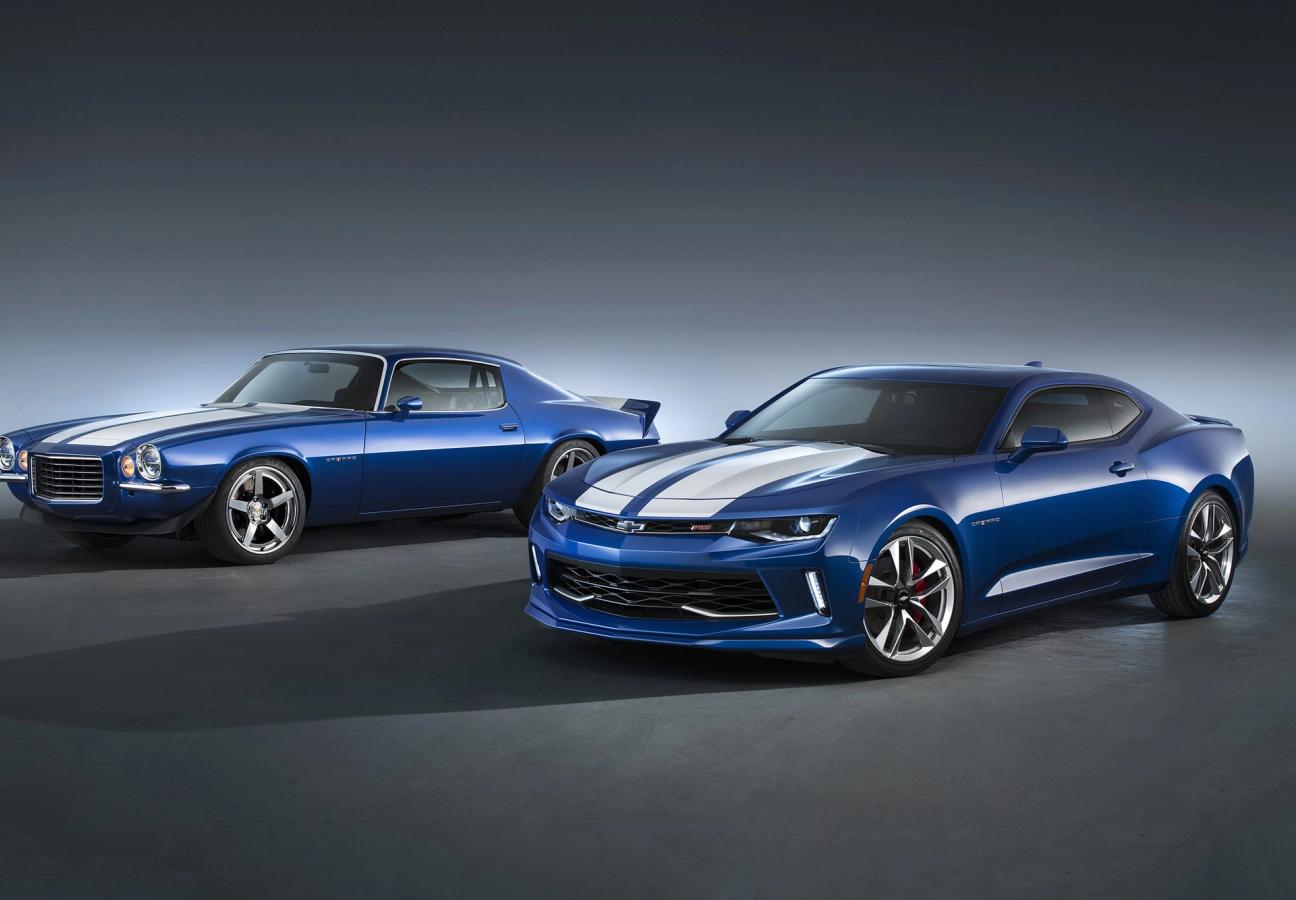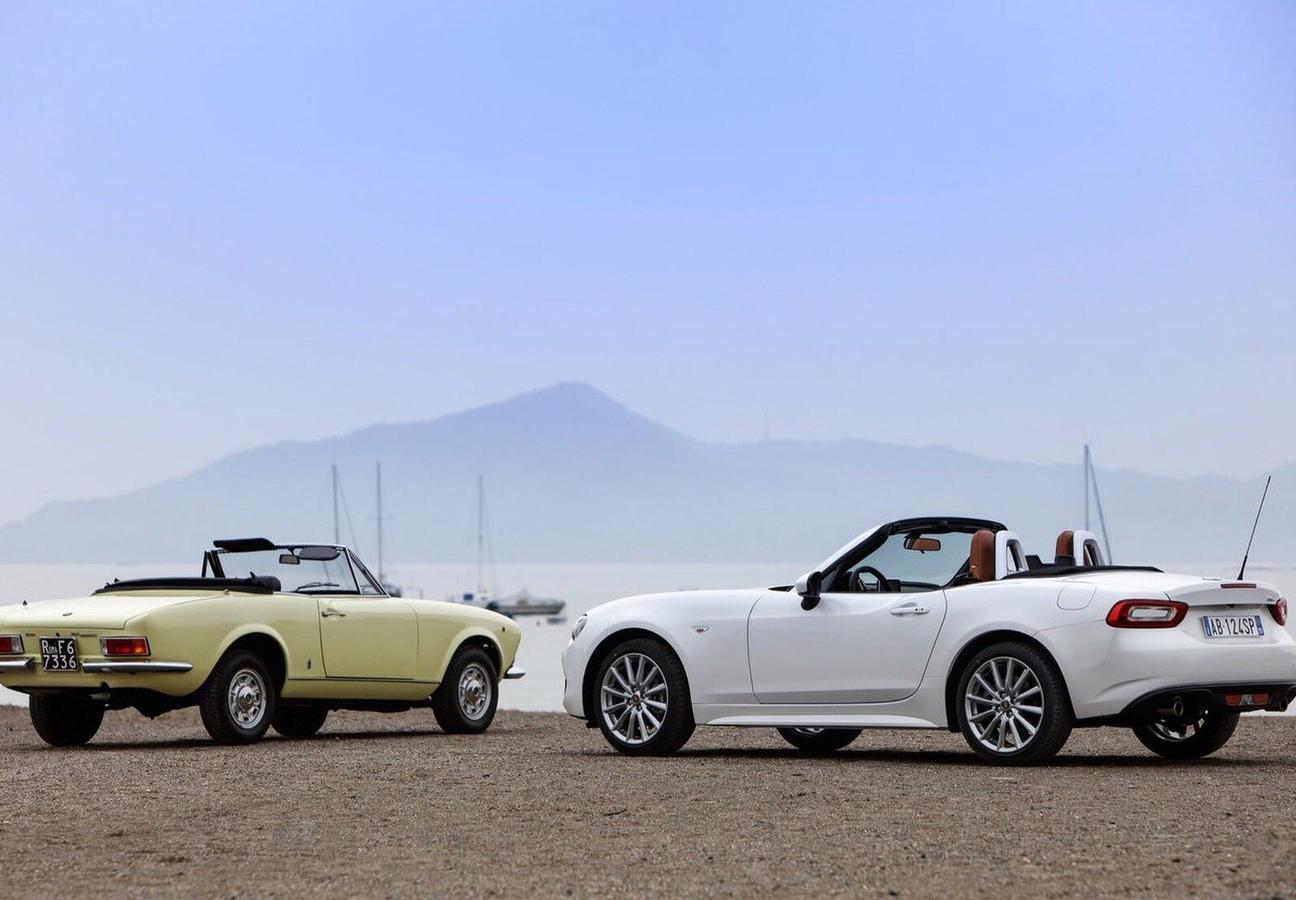

Words: Jonathan Wells
Remakes can be tricky. If you don’t believe us, just ask the people who tried to pull off the 2003 version of The Italian Job. Hell, just watch the 2003 version of The Italian Job — but only if you don’t mind iffy plotting and you really like Mark Wahlberg. No, we’ll always take the originals, thank you very much. The gold-bullion-pinching, cliff-hanging, blow-the-bloody-doors-offing originals. With almost no exceptions.
Cars, however, have bucked the trend. Despite sinful reboots of famous films and cash-grabbing covers of classic songs, there’s something about a well-made, well-meaning relaunch of an iconic car that really gets our motors running. Remember when Chevrolet’s Camaro muscled back onto the scene in 2010? How about in 2019, when Land Rover’s all-new, all-purpose Defender reared its already muddy head?

When a famous nameplate rides again, it sends a tingle down your spine. And perhaps Wahlberg’s wheels in that remake of The Italian Job are the most successful example of this. As best-selling and immediately recognisable as its predecessor, the new MINI Cooper.
Plans to remake the MINI — the retro 1959 gem that has turned heads and cracked smiles all over the world — were first hatched in 1995. Over at BMW, legendary car designer Frank Stephenson was busy building the German manufacturer’s first ever SUV — the soon to be seminal X5 — when development on the MINI began. After taking on the job, he spent the next five years researching and refining a new design.
But, when the day came to present the finished design — a full-sized clay model — to the board of directors, Stephenson stalled. He and his design team had neglected to add an exhaust pipe to the model. So, with minutes to spare, the designer punched a hole in an old beer can, stripped the paint from it and pushed it straight into the clay. It worked, he won over the board members, and they told him not to change a thing. So he didn’t — and that distinctive beer can lip remains part of the MINI Cooper’s design to this day. But it wasn’t all last-minute luck, Stephenson tells Gentleman’s Journal. Not by a long shot.

“I never really felt daunted,” the designer says. “Only excited — about having the opportunity to be in the right place at the right time with this awesome opportunity. I guess that, by having taken a studied and logical approach to this redesign, and combining that with a huge passion for designing, the chances of a success were greater.”
And Stephenson is no stranger to success; he has also worked as a design director at Ferrari, Maserati and McLaren, and has designed his fair share of supercars. But every project starts the same way — with research. The MINI was no different. Tasked with capturing the emotional value of the car’s past and combining it with the technology of the future, Stephenson came to arrive at his final design proposal in a rather unorthodox way.
“I hypothetically advanced the original MINI’s design by every decade,” he explains. “From 1959 to 1999, I effectively condensed 40 years of what a possible design evolution could’ve looked like into four weeks of conceptual sketching.”
We all know what happened next. The new MINI launched, and today almost five million have sold — and counting. The newly-hatched hatchback was to become the gold standard of automotive reincarnation — and almost immediately set an unenviable benchmark for all future reborn classics.
Most notably, it overtook Volkswagen’s 1997 New Beetle in both sales and public affection; BMW showing its fellow Germans the perfect way to recapture your glory days for a modern market. So what was Stephenson’s secret? How did he make the MINI such a huge success?
“In a nutshell,” the designer says, “the secret is that none of the features and design aspects should be copy-pasted over, otherwise the new car will run the risk of looking dated when launched. But, similarly to the way that we all hold a visual genetic link to our forefathers, we, as new ‘versions’, should also reflect an update in knowledge, strength, health and resilience.
“Modern engineering and technology allows designers to push our work towards more ‘impossible’ solutions than previous generations,” Stephenson continues. “Picking out the strongest and most characterful design elements of the original and accentuating them in the new design. That keeps the ‘family feeling’.”
It was a feeling lost with Volkswagen’s New Beetle. Stephenson admits that he’s always had a problem with the car — dubbing it ‘a design-over-purpose’ project. Form and function, the designer tells us, should always go hand-in-hand, and neither should rule majorly over the other. However, with the ever-increasing number of safety tests modern cars must pass, function often still takes the edge. At the time of its launch, many detractors of the new MINI complained that it wasn’t mini enough. But, Stephenson explains, this was so it could pass the tests, protect its passengers and do the job.
“Design should always have a higher value of purpose,” he explains, “otherwise it would just instead be ‘art’. So yes, safety has become the key driver in modern car design. But, rather than seeing safety as an obstacle to ‘good’ design, it needs to be seen as an opportunity to discover and develop new design directions.”

And plenty of cars have been driving in this new direction of resurrecting classic models. From Ford rebooting its iconic Mustang in 2005 to Fiat relaunching the sporty 124 Spider after 30 years, tapping into nostalgia has established itself as a proven way to shift cars. Even just relying on reusing a name can stir up enough sentimentality to get motorists reaching into their pockets, as evidenced by Vauxhall’s unrecognisable, unforgivable new Viva — or Ford’s baffling new Kuga.
“Nostalgia is a great option,” says Stephenson, “and it can serve well when the designer wants to touch the consumer’s emotional nerve. But I believe that if that direction is taken, the reinvention should be done in a way that also incorporates the advances of new technology.”
Case in point: the new Fiat 500. Amazingly, Stephenson was not only the man to drive the MINI back into style, but he also spearheaded the team that relaunched the compact Italian classic in 2007, 50 years since the car was first put into production. The 500 has enjoyed similar success to that of the MINI — but design pressure was presumably off once Stephenson had already proved himself?
“In a way it did make it easier,” agrees Stephenson. “The MINI was a proven solution to a similar challenge. The conundrum with the Fiat 500, though, was how to deliver the car to the market in less than a year from the start of the design process. We did it — but it took an unorthodox approach.”
The practice of successfully relaunching classic cars, the designer adds, has been almost exclusive to the compact car market — and certainly the most lucrative. So is this how the sector will function from now on — in a never-ending cycle of born-again classics? Has Stephenson paved the way for the future?
“I really hope not,” he concludes. “I believe that industrial design, and especially car design, should be about moving forward with innovation. We learn from the past and should build on that acquired knowledge to keep advancing and improving. That duty is the designer’s social responsibility.”
Want more modern classics? Could the Volkswagen Golf Mk2 GTI be the hottest hatch of all time?
Join the Gentleman’s Journal Clubhouse here.


